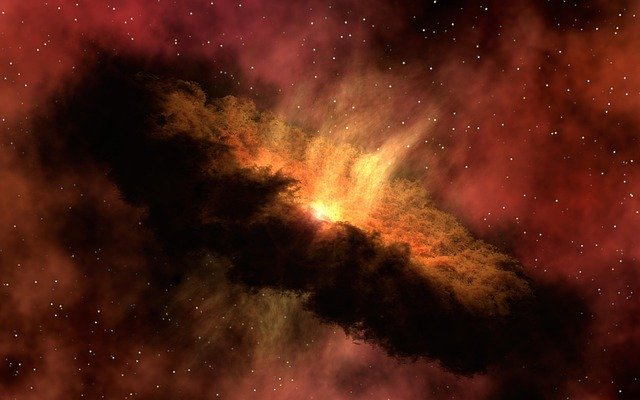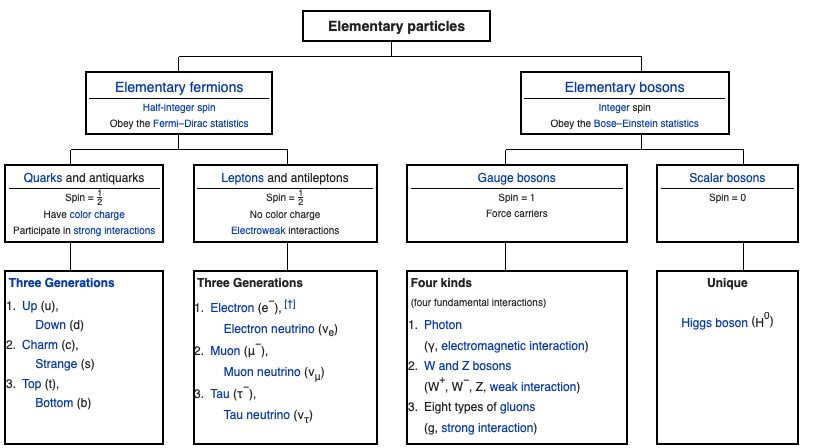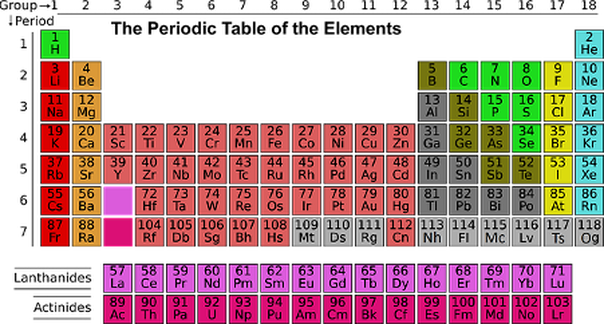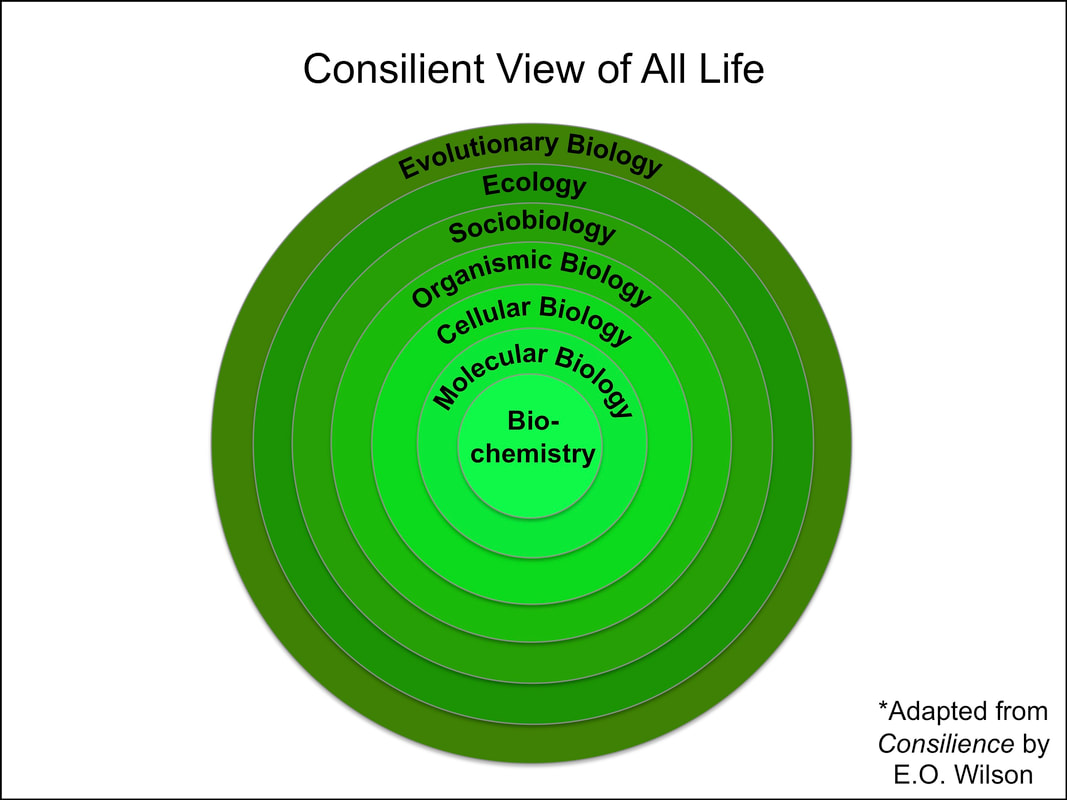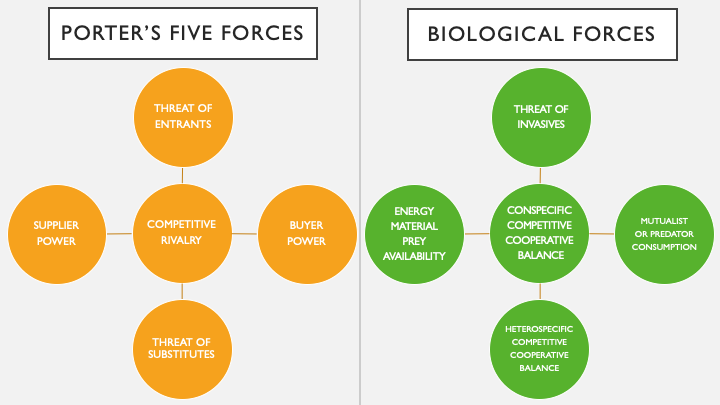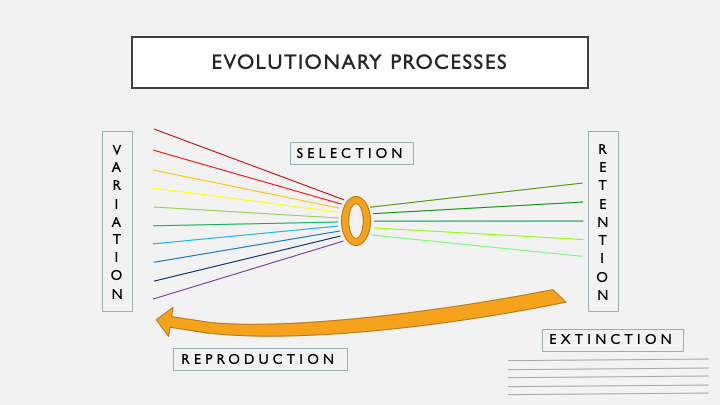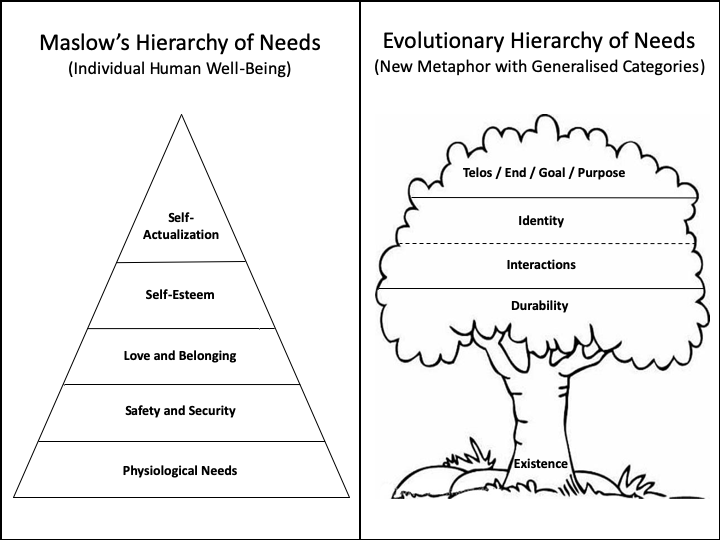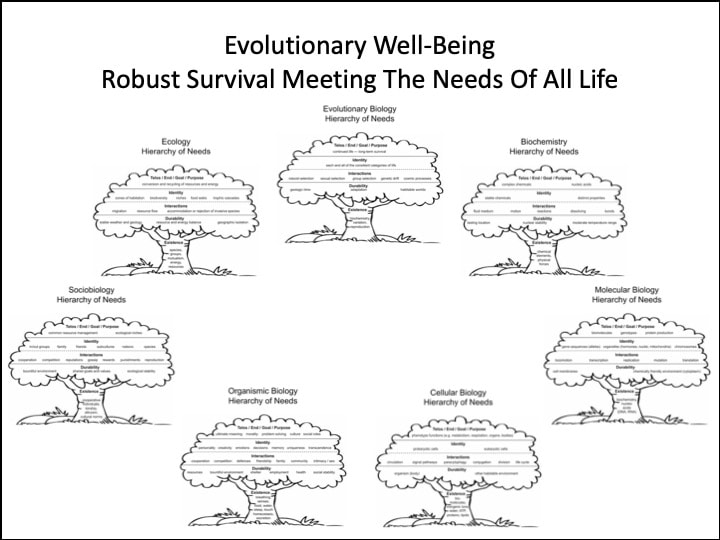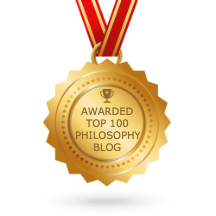“My background is in mathematics, computer science, and physics, so my first instincts are materialist. To try to explain everything in terms of the processes of physics: e.g. biology in terms of chemistry and chemistry in terms of physics. This is a wonderful great chain of explanation, but when it comes to consciousness, this is the one place where that great chain of explanation seems to break down.”
Does it really? For a philosopher like myself who sees the hypothesis of physicalism still holding up, I thought I ought to go through the “great chain of explanation” to see precisely where it does break down. Now, the details of the physicalist picture of the universe is not complete. And it never really can be either since we can’t get outside of the universe to know for sure what might be “out there” that we just don’t know yet. But we sure know a lot more about the universe now than we did when Descartes kicked this discussion off with the first philosophical usage of the word conscious in 1640. Major mysteries still exist, but I’d like to sketch in what we currently have a good picture of and see how consciousness best fits in there. As I do this, please be generous about what I’m calling a “sketch” for this simple blog post, but hopefully even these faintest outlines will prove helpful.
Physics
Everything we know about what has existed stretches back to the Big Bang origins of our universe. That’s not the whole story, but it’s a pretty big one. Among my basic tenets, the third one describes a bit about this size:
The universe is composed of trillions and trillions of stars and is currently expanding after a Big Bang and 13-14 billion years of evolutionary processes.* We are just another species of animal life on a single planet orbiting one of the stars in the universe. (* The best current estimate of the age of the universe is 13.75 ± 0.11 billion years. The best current estimate of the number of stars in the universe is from 3 to 100 × 10^22 or between 30 sextillion and 30 septillion.
The most successful theory describing the basic makeup of this universe is known as the Standard Model of particle physics. There are some fundamental physical phenomena that are currently beyond the Standard Model such as dark matter, dark energy, matter-antimatter asymmetry, and gravity (which is best described by Einstein’s Theory of General Relativity). Plus, Richard Feynman is also famously quoted as saying, “If you think you understand quantum mechanics, you don’t understand quantum mechanics.” However, no experimental results have definitively contradicted the Standard Model at the five-sigma level, and we are only working on a series about consciousness. Other than in the most extreme panpsychist views, consciousness doesn’t appear to operate at the quantum scales of quantum theory. Throughout Ginger Campbell’s podcast series on consciousness (Brain Science episodes 160—163), she noted that physicists and neuroscientists believe the human body is too warm for quantum computing and the speed and scale is all wrong. At the other extreme, conventional ideas about consciousness don’t think of it as operating over cosmic scales either, where dark matter and dark energy show themselves. So, let’s not worry too much about the frontiers still being explored in physics. Here, then, in my usual bullet-point format, are a few highlights about the Standard Model of physics. (Sources throughout this article are generally from well-cited Wikipedia entries unless otherwise noted.)
- The Standard Model of particle physics was developed in stages throughout the latter half of the 20th century through the work of many scientists around the world. The current formulation was finalized in the mid-1970s upon experimental confirmation of the existence of quarks.
- The Standard Model is the theory that classifies all known elementary particles and describes three of the four known fundamental forces in the universe—the electromagnetic, weak, and strong interactions, but not the gravitational force.
- The fundamental interactions, also known as fundamental forces, are the interactions that do not appear to be reducible to more basic interactions. The gravitational and electromagnetic interactions produce significant long-range forces whose effects can be seen directly in everyday life. The strong and weak interactions produce forces at minuscule, subatomic distances and govern nuclear interactions. Although the electromagnetic force is far stronger than gravity (gravity is 10x-36 of electromagnetism at the scale of protons/neutrons), it tends to cancel itself out within large objects, so over large distances (on the scale of planets and galaxies), gravity tends to be the dominant force.
- The Standard Model includes 12 elementary particles of spin 1⁄2, known as fermions. The model also includes gauge bosons, which are force carriers that mediate the strong, weak, and electromagnetic fundamental interactions. The Higgs boson explains why the photon and gluons are massless, and why the other elementary particles have mass.
- In physics, interactions are the ways that particles influence other particles. Gauge bosons are the force carriers that mediate the strong, weak, and electromagnetic fundamental interactions. The Standard Model explains such forces as resulting from matter particles exchanging other particles, generally referred to as force-mediating particles. (Gravitons have been hypothesised as force-mediating particles for gravity but have so far been undetected and mathematically problematic. Einstein’s description of the curvature of spacetime remains the best explanation of gravity.) When a force-mediating particle is exchanged, the effect at a macroscopic level is equivalent to a force influencing both of them, and the particle is therefore said to have mediated (i.e., been the agent of) that force.
- Quarks form composite particles called hadrons that contain either mesons (a quark and an antiquark) or baryons (three quarks). The most familiar baryons are protons and neutrons, which make up most of the mass of the visible matter in the universe, as well as forming the components of the nucleus of every atom. The first-generation charged particles do not decay, hence all ordinary (baryonic) matter is made of such particles. Specifically, all atoms consist of electrons orbiting around atomic nuclei, which are constituted of up and down quarks.
These sub-atomic particles and fundamental forces interact in many various ways but are governed by the three laws of thermodynamics. Let’s describe those briefly too.
- The laws of thermodynamics define physical quantities, such as temperature, energy, and entropy, which characterise systems at equilibrium. The laws describe the relationships between these quantities, and they form a basis for precluding the possibility of certain phenomena, such as perpetual motion. The three fundamental laws are:
- Conservation of Energy — The total energy of an isolated system is constant; energy can be transformed from one form to another but can be neither created nor destroyed. When energy passes, as work, as heat, or with matter, into or out of a system, the system's internal energy changes by the corresponding amount.
- Entropy — The total entropy of an isolated system can never decrease over time. (Entropy can be described as “the number of possible configurations of a system's components that is consistent with the state of the system as a whole.”)
- Zero —The entropy of a system approaches a constant value as the temperature approaches absolute zero.
Chemistry
Once these physics particles combine into atoms, we arrive at the field of chemistry. Here are some highlights from that field which contribute to this journey.
- Chemistry is the scientific discipline involved with elements and compounds composed of atoms, molecules, and ions, as well as their composition, structure, properties, behaviour, and the changes they undergo during a reaction with other substances.
- Traditional chemistry starts with the study of elementary particles, atoms, molecules, substances, metals, crystals, and other aggregates of matter. Matter can be studied in solid, liquid, gas, and plasma states, in isolation or in combination. The interactions, reactions, and transformations that are studied in chemistry are usually the result of interactions between atoms, leading to rearrangements of the chemical bonds which hold atoms together.
- The atom is the basic unit of chemistry. It consists of a dense core called the atomic nucleus surrounded by a space occupied by an electron cloud. The nucleus is made up of positively charged protons and uncharged neutrons, while the electron cloud consists of negatively charged electrons which orbit the nucleus.
- A chemical element is a pure substance which is composed of a single type of atom, characterized by its particular number of protons in the nuclei of its atoms, known as the atomic number. The standard presentation of the chemical elements is in the periodic table, which orders elements by this atomic number.
- A molecule is the smallest indivisible portion of a pure chemical substance that has its unique set of chemical properties allowing it to undergo a certain set of chemical reactions with other substances.
- A compound is a pure chemical substance composed of more than one element. The properties of a compound bear little similarity to those of its elements.
- Molecules are held together by covalent bonds, which involve the sharing of electron pairs between atoms. Covalent bonding occurs when these electron pairs form a stable balance between attractive and repulsive forces between atoms. Covalent bonding does not necessarily require that the two atoms be of the same elements, only that they be of comparable electronegativity.
- Intermolecular forces are the forces which mediate interactions between molecules and other types of neighbouring particles such as atoms or ions. They are weak relative to the intramolecular forces of covalent bonding which hold a molecule together.
- Intermolecular forces are electrostatic in nature; that is, they arise from the interaction between positively and negatively charged molecules. The four key intermolecular forces are: 1) Ionic bonds; 2) Hydrogen bonding; 3) Van der Waals dipole-dipole interactions; and 4) Van der Waals dispersion forces.
- The investigation of intermolecular forces starts from macroscopic observations which indicate the existence and action of forces at a molecular level. Information on intermolecular forces is obtained by macroscopic measurements of properties like viscosity, pressure, volume, and temperature data.
- A chemical reaction is a transformation of some substances into one or more different substances. Chemical reactions usually involve the making or breaking of chemical bonds. Chemical reactions happen at a characteristic reaction rate at a given temperature and chemical concentration. Typically, reaction rates increase with increasing temperature because there is more thermal energy available to reach the activation energy necessary for breaking bonds between atoms.
- There are hundreds or even thousands of specific types of chemical reactions. Oxidation, reduction, dissociation, acid-base neutralization, and molecular rearrangement are some of the commonly used kinds of chemical reactions.
- If you are asked to name the main 4, 5, or 6 types of chemical reactions, here is how they are categorized. The main four types of reactions are synthesis (A + B --> AB), decomposition (AB --> A + B), single replacement (AB + C --> AC + B), and double replacement (AB + CD --> AC + BD). If you’re asked for the five main types of reactions, it is these four and then either acid-base or redox (combustion) depending who you ask.
- Chemical reactions are governed by many laws, which have become fundamental concepts in chemistry. Some of them are: Avogadro's law, Beer–Lambert law, Boyle's law, Charles's law, Fick's laws of diffusion, Gay-Lussac's law, Henry's law, Hess's law, Law of definite composition, Law of multiple proportions, Raoult's law.
So, in physics, I noted that exchanges of particles (from the Standard Model), governed by discovered laws (of Thermodynamics), led to a description of fundamental forces being exerted on matter. In chemistry, we see something analogous: exchanges of elements (from the Periodic Table), governed by discovered laws (Avogadro’s, Boyle’s, Hess’s, etc.), leading to descriptions of intra- and inter-molecular forces exerted on matter. Might the same pattern hold for biology?
The Origins and Definitions of Life
In order to get there, we’ll have to traverse one of the other great mysteries of science. Besides the mysteries of quantum physics, dark matter, dark energy, and (of course) consciousness, the mystery of how life arose is still a major gap in our knowledge. How exactly did biology arise out of mere chemistry? Wherever gaps in our knowledge occur, supernatural explanations abound. But they offer no actual explanatory power. However, let’s take a look at one of the leading natural hypotheses of the origin of life (known technically as abiogenesis), and see how explanatory that might be. Here are some highlights from the transcript of a short video called The Origin of Life, which is about Dr. Jack Szostak (who happens to have won a Nobel Prize for his work on telomeres) and his work on abiogenesis at the Harvard Medical School.
(Note: Unless your biochemistry is very strong, I recommend watching the 10-minute video instead of reading these transcript highlights. The simple diagrams really help understand what is going on.)
- We know from experiments and observations in the fields of astronomy, chemistry, geology, and meteorology that the early pre-biotic Earth was filled with organic molecules, the building blocks of life. Organic molecules are actually quite common in space. We also know that early life must have been extremely simple, meaning no complex protein machinery. Modern cells separate themselves from the environment with a lipid bilayer (internally hydrophobic, externally hydrophilic). The problem with modern phospholipids is that they are too good at what they do. They form a nearly impenetrable barrier. Modern cells must use proteins to move molecules through their surface. But life didn’t have to start with modern chemicals!
- The pre-biotic environment contained many simple fatty acids. Under a range of pH, they spontaneously form stable vesicles (fluid-filled bladders). And they are permeable to small organic molecules, meaning no complex proteins are required to get stuff in. When a vesicle encounters free fatty acids in solution, it will incorporate them. Eating and growth are driven purely by thermodynamics. When a vesicle grows, it adopts a tubular branched shape (because surface area grows faster than volume), which is easily divided by mechanical forces (e.g. waves, currents, rocks, etc.). During mechanical division, none of the contents of the vesicle are lost.
- So far, with naturally occurring simple fatty acids, we have a vesicle that can spontaneously grow and divide. So, what about the genetic material? Again, modern nucleotides are too stable and require complex protein machinery to replicate. The pre-biotic environment contained hundreds of types of different nucleotides (not just DNA and RNA). All it took was for one to self-polymerize. Recent experiments have shown that some of these are capable of spontaneous polymerization where monomers will base pair with a single stranded template and self ligate. In other words, strings X (e.g. AGGTACA) bond with specific strings Z (e.g. CTTGCAC) using hydrogen bonds for each base pair and covalent bonds for further ligation. They can also polymerize in solution and spontaneously form new templates or extend existing templates. No special sequences are required. It’s just chemistry.
- So far, we have lipid vesicles that can grow and divide, and nucleotide polymers that can self-replicate, all on their own. But how does it become life? Here’s how. Our fatty acid vesicles are permeable to nucleotide monomers, but not polymers. (Single chains can get in; bonded ones can’t get out.) Once spontaneous polymerization occurs within the vesicle, the polymer is trapped. Floating though the ocean, the polymer-containing vesicles will encounter convection currents such as those set up by hydrothermal vents. (Fatty acid vesicles are stable under near boiling conditions.) The high temperatures will separate the polymer strands and increase the membrane’s permeability to monomers. Once the temperature cools, spontaneous polymerization can occur. And the cycle repeats. Here’s where it gets cool.
- The polymer, due to surrounding ions, will increase the osmotic pressure within the vesicle, stretching its membrane. A vesicle with more polymer, through simple thermodynamics, will “steal” lipids from a vesicle with less polymer. This is the origin of competition. They eat each other. A vesicle that contains a polymer that can replicate faster will grow and divide faster, eventually dominating the population.
- Let’s review: Monomers diffuse into a fatty acid vesicle. Monomers spontaneously polymerize and copy any template. Heat separates strands and increases membrane permeability to monomers. Polymer backbones attract ions, increasing osmotic pressure. Pressure on the membrane drives its growth at the expense of nearby vesicles containing less polymer. Vesicles grow into tubular structures. Mechanical forces cause vesicles to divide. Daughter vesicles inherit polymers from the parent vesicle. Polymer sequences that replicate faster will dominate the population. Thus beginning evolution!
- Early genomes were completely random and therefore contained no information. It was their ability to spontaneously replicate, irrespective of sequence, that drove growth and division of the fatty acid vesicles. Any mutation that increases the rate of polymer replication would be selected for. And, as we know, mutation + natural selection = increased information. Early beneficial mutations would include: “change in sequence to contain only the most common nucleotides”; “don’t form secondary structures that block replication”; “form sequences that are stable yet separate easily”; and “form secondary structures that show some enzymatic activity”.
- Just like RNA, early nucleotides could both store information and function as enzymes. Early polymer enzymes would enhance replication, use high energy molecules in the environment (near thermal vents) to recharge monomers, synthesize lipids from other molecules in the environment, modify lipids so they don’t leave a membrane, and that’s it. That’s it! A simple 2-component system that spontaneously forms in the pre-biotic environment can eat, grow, contain information, replicate, and evolve, simply through thermodynamic, mechanical, and electrical forces. No ridiculous improbability, no supernatural forces, no lightening striking a mud puddle. Just chemistry.
- For much more on this RNA world hypothesis, see the video series with Dr. Jack Szostak.
We can’t go back and empirically observe this formation of life. Nor can we run an experiment over millions of years to see if it could happen again. But this sure sounds like a plausible theory for the leap from chemistry to biology that kicks off evolution and the development of life from there. When can we say life first arose? That’s impossible to say. Through an evolutionary lens life is a gradually emerging phenomenon with no currently clear dividing line or definition, although there are some characteristics that slowly took root and are now generally well established and accepted as defining life. Let’s see those.
- The definition of life has long been a challenge for scientists and philosophers, with many varied definitions put forward. This is partially because life is a process, not a substance. Most current definitions in biology are descriptive. Life is considered a characteristic of something that preserves, furthers, or reinforces its existence in the given environment. According to this view, life exhibits all or most of the following traits:
- Homeostasis: regulation of the internal environment to maintain a constant state; for example, sweating to reduce temperature.
- Organization: being structurally composed of one or more cells—the basic units of life.
- Metabolism: transformation of energy by converting chemicals and energy into cellular components (anabolism) and decomposing organic matter (catabolism). Living things require energy to maintain internal organization (homeostasis) and to produce the other phenomena associated with life.
- Growth: maintenance of a higher rate of anabolism than catabolism. A growing organism increases in size in all of its parts, rather than simply accumulating matter.
- Adaptation: the ability to change over time in response to the environment. This ability is fundamental to the process of evolution and is determined by the organism's heredity, diet, and external factors.
- Response to stimuli: a response can take many forms, from the contraction of a unicellular organism to external chemicals, to complex reactions involving all the senses of multicellular organisms. A response is often expressed by motion; for example, phototropism (the leaves of a plant turning toward the sun), and chemotaxis (movement of a motile cell or organism, or part of one, in a direction corresponding to a gradient of increasing or decreasing concentration of a particular substance).
- Reproduction: the ability to produce new individual organisms, either asexually from a single parent organism or sexually from two parent organisms.
- These complex processes, called physiological functions, have underlying physical and chemical bases, as well as signaling and control mechanisms that are essential to maintaining life.
- From a physics perspective, living beings are thermodynamic systems with an organized molecular structure that can reproduce itself and evolve as survival dictates.
- Thermodynamically, life has been described as an open system which makes use of gradients in its surroundings to create imperfect copies of itself. Hence, life is a self-sustained chemical system capable of undergoing Darwinian evolution. A major strength of this definition is that it distinguishes life by the evolutionary process rather than its chemical composition.
- Whether or not viruses should be considered as alive is controversial. They are most often considered as just replicators rather than forms of life. They have been described as “organisms at the edge of life” because they possess genes, evolve by natural selection, and replicate by creating multiple copies of themselves through self-assembly. However, viruses do not metabolize, and they require a host cell to make new products. Virus self-assembly within host cells has implications for the study of the origin of life, as it may support the hypothesis that life could have started as self-assembling organic molecules.
- The study of artificial life imitates traditional biology by recreating some aspects of biological phenomena. Scientists study the logic of living systems by creating artificial environments—seeking to understand the complex information-processing that defines such systems. While life is, by definition, alive, artificial life is generally referred to as data confined to a digital environment and existence.
Biology
So, once physical and chemical processes have self-assembled and evolved into having these characteristics, we get life, the study of which is called biology. In his book Consilience: The Unity of Knowledge, E.O. Wilson proposed seven categories to integrate all of the biological sciences. His seven categories describe the study of life in totality, from the smallest atomic building blocks, to the billions of years of life-history that they have all constructed. Therefore, the simple diagram below of these mutually exclusive, collectively exhaustive categories is actually an astonishingly broad vision of all of the life that has ever existed or will ever exist.
“When a force-mediating particle is exchanged, the effect at a macroscopic level is equivalent to a force influencing both of them, and the particle is therefore said to have mediated (i.e., been the agent of) that force.”
And when we talked about forces in chemistry, they were described this way:
“The investigation of intermolecular forces starts from macroscopic observations which indicate the existence and action of forces at a molecular level.”
In other words, it is the effect at a macroscopic level that we describe as equivalent to a force. This reminds me of Porter’s Five Forces in the field of strategic management. Harvard business school professor Michael Porter noted that you could map the competitive environment of any industry in order to understand the industry’s attractiveness in terms of profitability. Porter’s five forces are exerted by: 1) suppliers (supplier power), 2) buyers (buyer power), 3) entrants (threat of new entrants), 4) substitutes (threat of substitution), and 5) competitors (competitive rivalry). These forces are the influences that change the behavior of businesses. Strategic analysts can rate their relative strengths in order to predict profitability for a firm and then guide actions to improve a firm’s chances for success. Calculations are far too complicated to put stable coefficients in front of formulas to calculate these forces and their combined interactions, but we generally grasp them and can see how they work.
Similarly, there are forces at work in the competitive environment of biological life. However, instead of driving towards the profits that allow a business to survive, biological forces drive life towards lots of actions that aid survival. One significant difference between these forces is that in the business world, cooperation between separate legal entities can often be ruled as illegal collusion, so B-school graduates tend to focus only on competition. In biology, of course, cooperation plays a major role in the collective struggle for life to survive. Within any ecological niche, however, the same dynamics play out as in the business world. (This makes sense, of course, because the business world is just another ecological niche.) In biology, there is 1) consumption of upstream inputs of energy, material, or prey (suppliers); 2) consumption of downstream outputs by mutualists, micro- or macroscopic predators (buyers); 3) potentially invasive species (threat of entrants); 4) current niche competitors from heterospecifics in other species (substitutes); and 5) the balance between competition and cooperation among conspecifics from the same species (competitive rivalry). In the great interrelated web of life, any individual or species can play any of these parts depending on how you define the circle around an ecosystem for analysis. (We all get eaten at some point I like to say.) And just as the complexity in the system makes Porter’s Five Forces impossible to calculate with precision, the same is also true for these biological forces. Yet, we can illustrate them and discuss their relative strengths to aid in analysis.
- Natural selection is the differential survival and reproduction of individuals due to differences in phenotype. It is a key mechanism of evolution (which is defined as the change in the heritable traits that are characteristic of a population over generations). Charles Darwin popularized the term ‘natural selection’, contrasting it with artificial selection, which in his view is intentional, whereas natural selection is not.
- Natural selection acts on the phenotype, the characteristics of the organism which actually interact with the environment, but the genetic (heritable) basis of any phenotype that gives that phenotype a reproductive advantage may become more common in a population. Over time, this process can result in populations that specialize for particular ecological niches (microevolution) and may eventually result in speciation (the emergence of new species, macroevolution).
- Darwin defined natural selection as the “principle by which each slight variation [of a trait], if useful, is preserved.”
- In a letter to Charles Lyell in September 1860, Darwin regretted the use of the term Natural Selection, preferring the term Natural Preservation [which sounds less directed and more emergent].
- With the early 20th century integration of evolution via Mendel's laws of inheritance (the so-called Modern Synthesis), scientists generally came to accept natural selection.
- Ernst Mayr recognized the key importance of reproductive isolation for speciation in 1942. W. D. Hamilton conceived of kin selection in 1964. This synthesis cemented natural selection as the foundation of evolutionary theory, where it remains today.
- A second synthesis was brought about at the end of the 20th century by advances in molecular genetics, creating the field of evolutionary developmental biology (‘evo-devo’), which seeks to explain the evolution of form in terms of the genetic regulatory programs which control the development of the embryo at the molecular level. Natural selection is here understood to act on embryonic development to change the morphology of the adult body.
- Selection can be classified in several different ways, such as by its effect on a trait, on genetic diversity, by the life cycle stage where it acts, by the unit of selection, or by the resource being competed for.
- Selection has different effects on traits. ‘Stabilizing selection’ acts to hold a trait at a stable optimum, and in the simplest case all deviations from this optimum are selectively disadvantageous. ‘Directional selection’ favors extreme values of a trait. The uncommon ‘disruptive selection’ also acts during transition periods when the current mode is sub-optimal but alters the trait in more than one direction.
- Alternatively, selection can be divided according to its effect on genetic diversity. ‘Purifying’ or ‘negative selection’ acts to remove genetic variation from the population (and is opposed by ‘de novo mutation’, which introduces new variation). In contrast, ‘balancing selection’ acts to maintain genetic variation in a population by negative frequency-dependent selection. One mechanism for this is heterozygote advantage, where individuals with two different alleles have a selective advantage over individuals with just one allele. The polymorphism at the human ABO blood group locus has been explained in this way.
- Another option is to classify selection by the life cycle stage at which it acts. Some biologists recognize just two types: ‘viability selection’, which acts to increase an organism's probability of survival, and ‘fecundity selection’, which acts to increase the rate of reproduction, given survival.
- Selection can also be classified by the level or unit of selection. ‘Individual selection’ acts on the individual, in the sense that adaptations are for the benefit of the individual and result from selection among individuals. ‘Gene selection’ acts directly at the level of the gene. In ‘kin selection’, gene-level selection provides a more apt explanation of the underlying process. ‘Group selection’, if it occurs, acts on groups of organisms, on the assumption that groups replicate and mutate in an analogous way to genes and individuals.
- Finally, selection can be classified according to the resource being competed for. ‘Sexual selection’ results from competition for mates. Sexual selection typically proceeds via fecundity selection, sometimes at the expense of viability. ‘Ecological selection’ is natural selection via any means other than sexual selection, such as kin selection, competition, and infanticide. Following Darwin, natural selection is sometimes defined as ecological selection, in which case sexual selection is considered a separate mechanism.
- How life originated from inorganic matter remains an unresolved problem in biology. One prominent hypothesis is that life first appeared in the form of short self-replicating RNA polymers. On this view, life may have come into existence when RNA chains first experienced the basic conditions, as conceived by Charles Darwin, for natural selection to operate. These conditions are: 1) heritability, 2) variation of type, and 3) competition for limited resources. The three primary adaptive capacities could therefore logically have been: 1) the capacity to replicate with moderate fidelity (giving rise to both heritability and variation of type), 2) the capacity to avoid decay, and 3) the capacity to acquire and process resources.
- By analogy to the action of natural selection on genes, the concept of memes has arisen as units of cultural transmission, or culture's equivalents of genes undergoing selection and recombination. Memes were first described in this form by Richard Dawkins in 1976 and were later expanded upon by philosophers such as Daniel Dennett as explanations for complex cultural activities, including human consciousness.
- Sexual reproduction is the most common life cycle in multicellular eukaryotes, such as animals, fungi, and plants. Sexual reproduction does not occur in prokaryotes (organisms without cell nuclei), but they have processes with similar effects such as bacterial conjugation, transformation, and transduction, which may have been precursors to sexual reproduction in early eukaryotes.
- Sexual selection is a mode of natural selection in which some individuals out-reproduce others of a population because they are better at securing mates for sexual reproduction.
- Sexual selection was first proposed by Charles Darwin in The Origin of Species (1859) and developed in The Descent of Man and Selection in Relation to Sex (1871), as he felt that natural selection alone was unable to account for certain types of non-survival adaptations.
- Darwin's ideas on sexual selection were met with skepticism by his contemporaries and not considered of great importance until the 1930s when biologists decided to include sexual selection as a mode of natural selection. Only in the 21st century have they become more important in biology; the theory is now seen as generally applicable and analogous to natural selection.
- One factor that can influence the type of competition observed is the population density of males. Another factor that can influence male-male competition is the value of the resource to competitors. Male-male competition can pose many risks to a male's fitness, such as high energy expenditure, physical injury, lower sperm quality, and lost paternity. The risk of competition must therefore be worth the value of the resource. A third factor that can impact the success of a male in competition is winner-loser effects. The winner effect is the increased probability that an animal will win future aggressive interactions after experiencing previous wins, while the loser effect is the increased probability that an animal will lose future aggressive interactions after experiencing previous losses. The outcomes of winner and loser effects help develop and structure hierarchies in nature and is used to support the game theory model of aggression.
So, we’ve identified the most fundamental forces and laws affecting life on Earth. There are, of course, many ways that the ultimate question of survival can be determined, and life has been slowly learning to sense and understand these over billions of years. For example, there are so many things that can kill you, your genes, your kin, or your species, and they can all do so in the immediate, medium, or very long term. Living organisms that can sense and respond to more and more of these threats are the ones that will last and emerge over time. Such organisms will sense many, many needs to meet all of the threats and exploit all of the opportunities in its environment. Each living organism’s unique genetic, environmental, and evolutionary histories are constantly leading to changes in the relative strengths of these needs, but at no point does something outside of the physical realm enter into the equation. All of these needs can be described through physical properties, even if the magnitude of their felt force cannot yet be calculated.
The ever-growing list of threats and opportunities is why the needs of life are ever-growing too. The psychologist Abraham Maslow studied these for individual humans and produced his famous Hierarchy of Needs. In a 2017 article, I generalized these and adapted them to apply to all of life, thereby producing something I call an Evolutionary Hierarchy of Needs. Here are some details from that work:
- Maslow’s Hierarchy of Needs
- Physiological Needs — breathing, food, water, sex, sleep, homeostasis, excretion
- Safety and Security — resources, property, employment, health, social stability
- Love and Belonging — friendship, family, intimacy
- Self-Esteem — confidence, achievement, mutual respect, uniqueness
- Self-Actualization — meaning, purpose, morality, creativity, spontaneity, problem solving
- The evolutionary perspective of our diverse and ever-changing web of life transforms Maslow’s hierarchy. Starting at the bottom of the pyramid, we see that the ‘physiological’ needs of the human are merely the brute ingredients necessary for ‘existence’ that any form of life might have. In order for that existence to survive through time, the second-level needs for ‘safety and security’ can be understood as promoting ‘durability’ in living things. The third-tier requirements for ‘love and belonging’ are necessary outcomes from the unavoidable ‘interactions’ that take place in our deeply interconnected biome of Earth. The ‘self-esteem’ needs of individuals could be seen merely as ways for organisms to carve out a useful ‘identity’ within the chaos of competition and cooperation that characterizes the struggle for survival. And finally, the ‘self-actualization’ that Maslow struggled to define could be seen as the end, goal, or purpose that an individual takes on so that they may (consciously or unconsciously) have an ultimate arbiter for the choices that have to be made during their lifetime. This is something Aristotle called ‘telos’.
- Maslow and other psychologists say that individual humans have a need to care for their kin, but what does that really mean once science teaches us that all of life is our kin? Rather than just trying to understand and meet the hierarchy of needs for our fellow human individuals, we could collectively spend much more time considering such details for each realm of E.O. Wilson’s consilient view of life.
- Existence — breathing, food, water, senses, sleep, touch, homeostasis, excretion
- Durability — resources, bountiful environment, shelter, employed, health, social stability
- Interactions — cooperation, competition, defences, friendship, family, community, intimacy / sex
- Identity — personality, creativity, emotions, decisions, memory, uniqueness, transcendence
- Telos / End / Goal / Purpose — ultimate meaning, morality, problem solving, culture, social roles
- Evolutionary Hierarchy of Needs for Evolutionary Biology to Occur
- Existence — biochemistry, variation, reproduction
- Durability — geologic time, adaptation, habitable worlds
- Interactions — natural selection, sexual selection, group selection, genetic drift, cosmic processes
- Identity — each and all of the consilient categories of the tree of life
- Telos / End / Goal / Purpose — continued life, long term survival
- The most important takeaway from a quick pass through the collection of hierarchies is the fact that they are all related. Each level of biology requires a healthy and stable lower level to provide the ingredients for its existence. Each level also needs a healthy and stable level above it to provide a durable habitat for its existence. And the top-most level of evolutionary biology can only kick off (as far as we know from the history of Earth) after the formation of biochemistry in the lowest level. In other words, no matter how much you focus on one seemingly individual tree, it is actually part of an interwoven forest of life.
- This broad perspective is not a luxury for the philosophically minded alone. It is a necessity. If we are to consider needs at all, we must enlarge our circle of concern as far as it will go. If I held that the flourishing of Ed Gibney was the absolute highest priority, others would find me selfish and stop working with me. They might even imprison me depending on my acts of callous selfishness. Only a lack of power and opportunity would stop me from acting for myself by exploiting others. If, instead, the flourishing of my family were the highest priority, I would provoke feuds with clans or mafias around me. If the flourishing of my community were the highest priority, ideological crusades and genocides would be eventual outcomes after intractable disagreements. If the flourishing of my nation were the highest priority, wars would be the result. If the flourishing of my species were the highest priority, we would commit ecocide without a second thought. If my ecosystem were the highest priority, our invasive species would produce monocultures with little resilience in the face of change. It’s only when our absolute highest priorities are concerned with the evolution of life in general that we can find ways for all of life to flourish together and ensure its long-term survival.
- And so, it is incumbent upon us, for individual and collective reasons, to not only understand Maslow and other psychologists’ hierarchies of human needs, but we must also expand these hierarchies and adapt them to portray a wider and fully evolutionary view as well. As Darwin himself said, there is grandeur in this view of life.
Brief Comments
Phew! That concludes my (very) brief history of everything that has ever empirically existed. I’ve gone from the appearance of sub-atomic particles and fundamental forces after the Big Bang up to the longest-term view of all of the needs required for the evolution of life. This gives us an outline of the “great chain of explanation” that Chalmers described at the top of this article as “biology in terms of chemistry and chemistry in terms of physics.” All along the way, we see exchanges of particles defining changes in forces that affect matter according to natural laws that are regular and can be studied empirically.
Where might consciousness fit into all of this??
In my last post about the history of philosophical and scientific studies of consciousness, I noted an etymological root of the word that I think offers some help. Wikipedia noted that the English word ‘conscious’ originally derived from the Latin conscius where con meant ‘together’ and scio meant ‘to know’. According to this literal interpretation, to be conscious would be ‘to know’, which requires a knower. And to ‘know together, this conscious thing would need to know at least two things.
Do sub-atomic particles feeling fundamental forces meet these criteria? No. Do elements from the periodic table feeling intermolecular forces meet these criteria? Also no. Do living things feeling biological forces meet these criteria? Yes. Once chemistry makes the jump to biology, the resulting proto-life forms have a defined self AND they begin to compete for resources with other potential entrants, substitutes, or conspecifics in order to self-replicate and survive. They know (from an outsiders’ perspective) what they are AND what they need. A radical panpsychist might claim that a quark can feel the strong nuclear force, or a hydrogen atom can feel the covalent bond in H2O, but I think a more natural joint to carve a philosophical place for consciousness is in the biological realm where life responds to biological forces to survive. Could artificial life also respond to these forces and be declared conscious? I think yes, although the “feeling of what it is like” to be such life would be very different from current biological life forms that are built from organic chemistry. We already believe the feeling of what is like to be a bat is likely very different from that of a cuttlefish, so the difference would be even greater for artificial life given the much larger change in underlying mechanisms. Yet both could be considered conscious in my definition.
As Mark Solms wrote in The Hard Problem of Consciousness and the Free Energy Principle, “There cannot be any objects of consciousness without a subject of consciousness. You cannot experience objects unless you are there to experience them.” The earliest forms of life were the first such subjects who experienced a need. As these lifeforms evolved to sense more and more needs, their consciousness grew in quantity and quality of varieties. I acknowledge that this view of consciousness—as an evolved trait of living things sensing and responding to biological forces—raises a lot of questions. To try and answer them—at least as well as the current state of science allows—we’ll need a comprehensive understanding of this position. In my next post, I’ll introduce a framework that can help lead us through that kind of comprehensive explanation. After that, I’ll step through the framework item-by-item until I can finally arrive at my full evolutionary theory of consciousness (for now).
--------------------------------------------
Previous Posts in This Series:
Consciousness 1 — Introduction to the Series
Consciousness 2 — The Illusory Self and a Fundamental Mystery
Consciousness 3 — The Hard Problem
Consciousness 4 — Panpsychist Problems With Consciousness
Consciousness 5 — Is It Just An Illusion?
Consciousness 6 — Introducing an Evolutionary Perspective
Consciousness 7 — More On Evolution
Consciousness 8 — Neurophilosophy
Consciousness 9 — Global Neuronal Workspace Theory
Consciousness 10 — Mind + Self
Consciousness 11 — Neurobiological Naturalism
Consciousness 12 — The Deep History of Ourselves
Consciousness 13 — (Rethinking) The Attention Schema
Consciousness 14 — Integrated Information Theory
Consciousness 15 — What is a Theory?
Consciousness 16 — A (sorta) Brief History of Its Definitions
